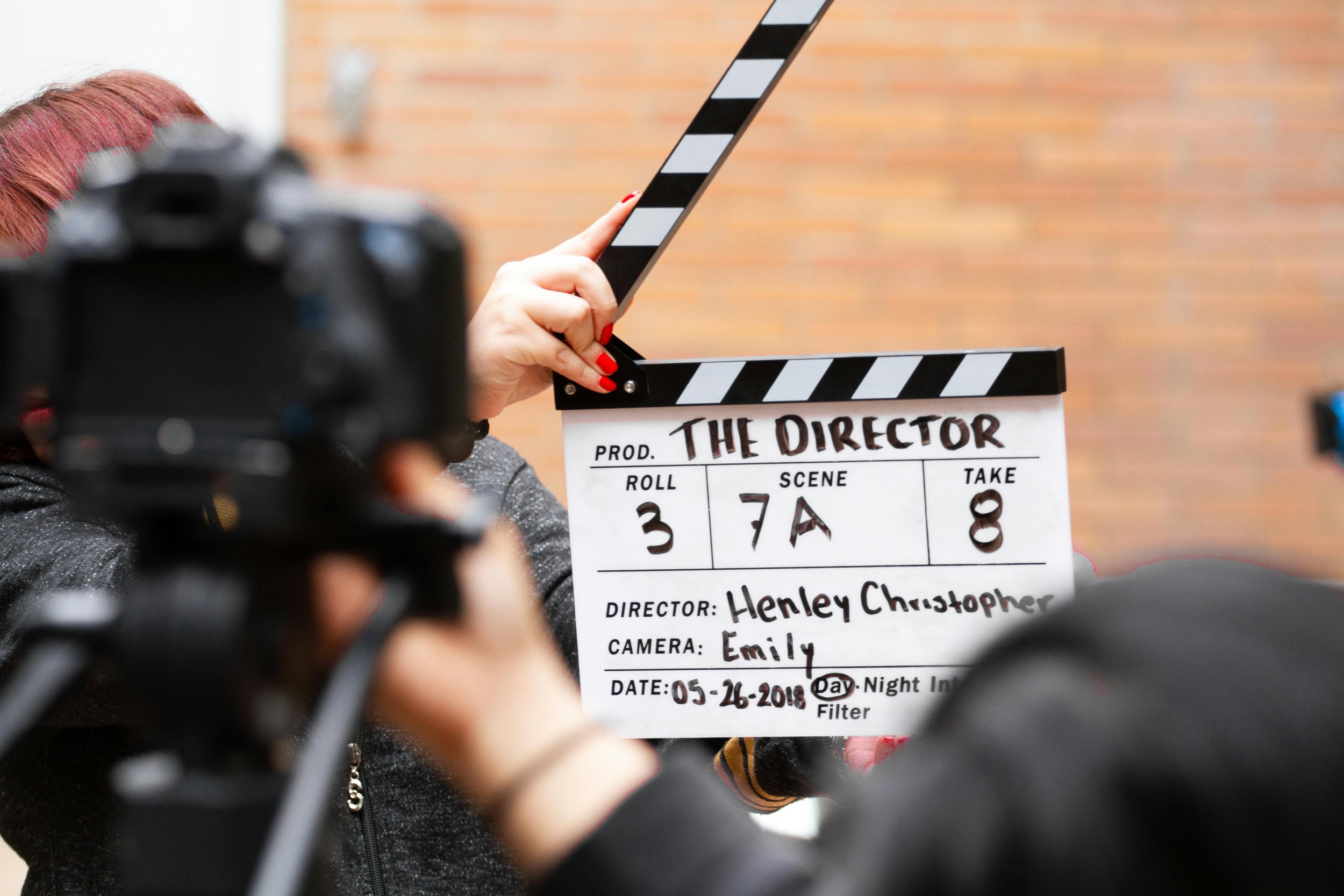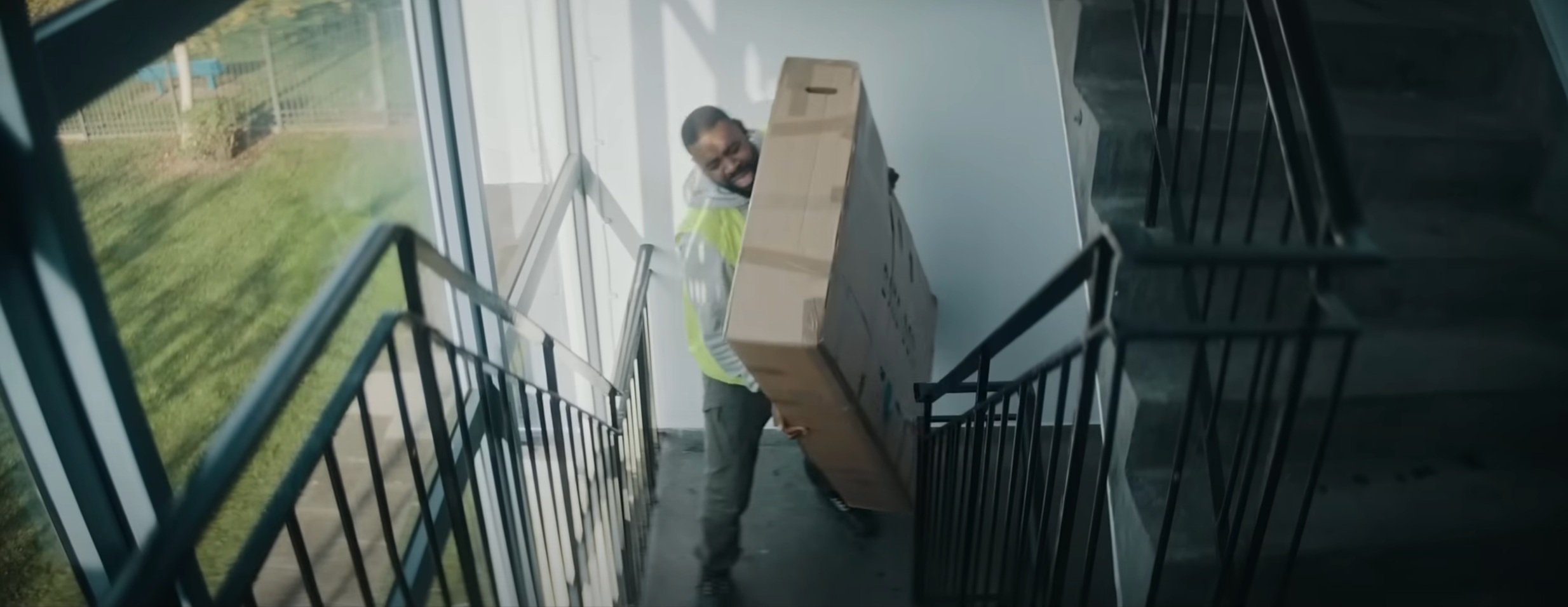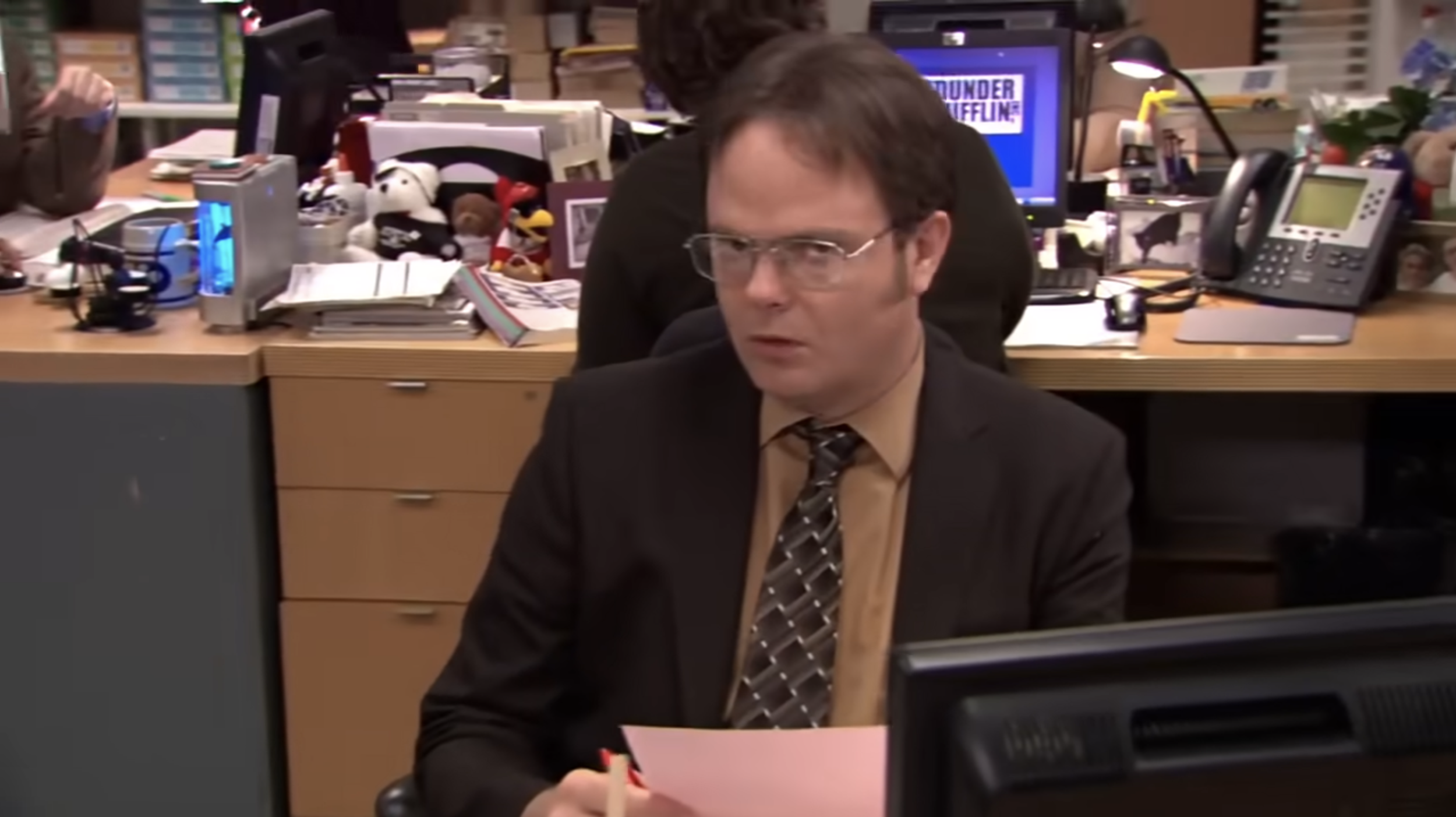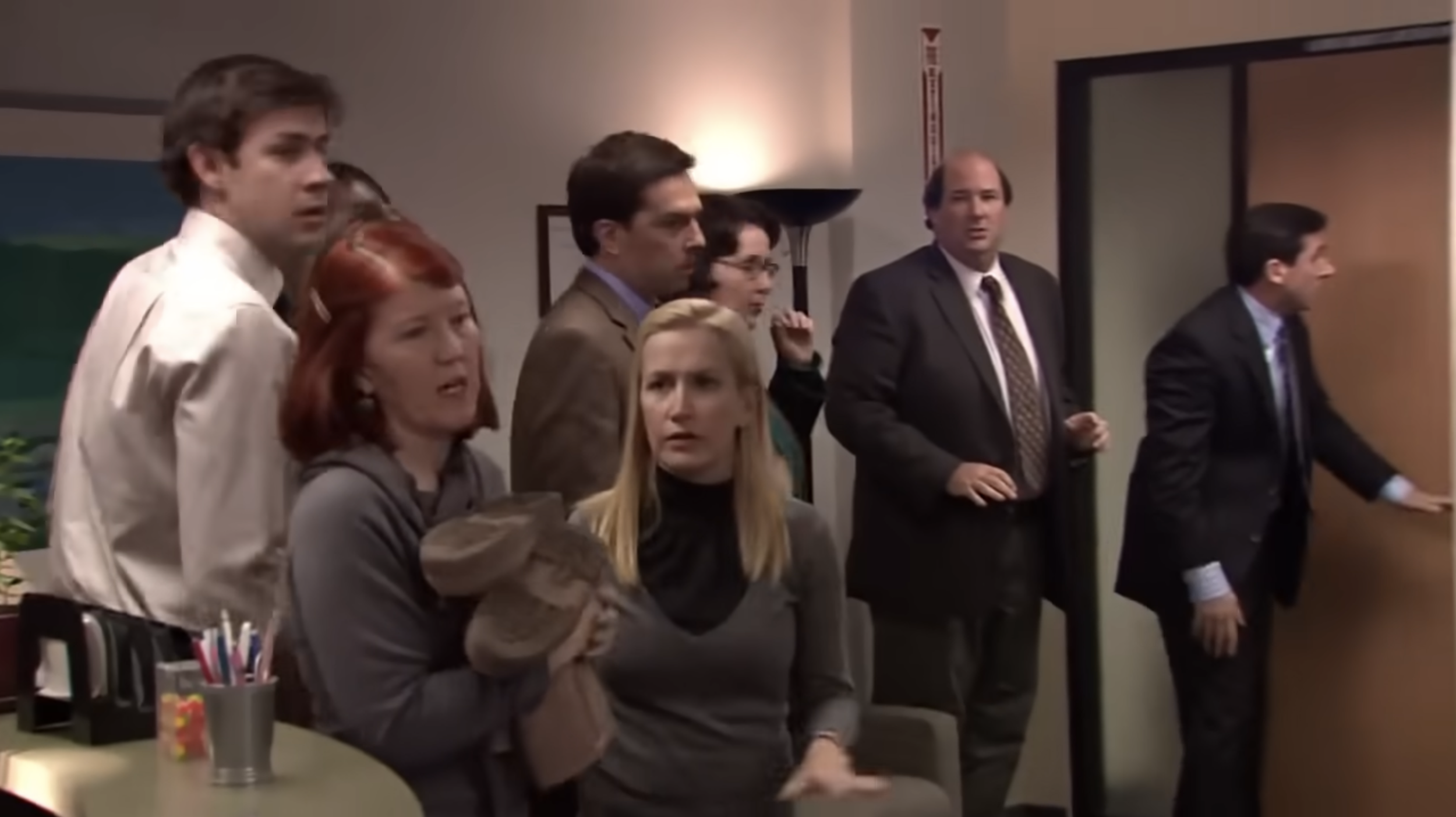
Single Camera Productions
Oscar Scannell
BTEC Media
Unit 20
Task 1
2024
Oscar Scannell BTEC Media Unit 20 Task 1 2024
this webpage has been designed to be viewed on a computer rather than a mobile device.
Positives / negatives
Positives of single camera productions
Creative Control: When a production only uses one camera, the DOP and director can work together to get the most out of each shot.
Cost of Equipment: Due to the fact that only one camera is required, the overall cost of equipment is lower than a multi-camera setup
Simpler set up without needing to ensure other cameras aren’t in shot
Flexibility with shots: As there is only one camera and each scene can be shot multiple times, the film crew can experiment with shot types and can put the camera basically wherever they want to.
Care over shots: Multiple takes allow for careful staging and framing of shots.
Negatives of single camera productions
Cost: Whilst the cost of equipment would usually be lower than a multi-cam production, due to the fact that each scene needs to be shot multiple times, with different angles, and each of these would usually be done multiple times, the length of the shoot is overall longer, so the cost of paying actors and crew, and the cost of renting equipment and locations would add up.
Time-consuming: As with the last point, it can take a lot of time to shoot each scene because it requires several takes from various angles / shot types, each of which will need to be shot multiple times.
Continuity: It can be difficult to keep the lighting and actor placement constant throughout different takes.
types of shots
Establishing Shot: A shot utilized to present the setting or location.
Wide Shot: Captures the entire scene or landscape, placing the subject within its environment. Commonly used to depict scale or a character's relationship to their surroundings.
Full Shot: Focuses on the subject from head to toe, occupying the entire frame. Highlights the character's complete appearance, movements, and body language.
Medium Shot: Encapsulates the subject from the waist up, showcasing some details of the upper body while also incorporating background context.
Medium Close-Up: Displays the subject from the chest up, offering greater emphasis on facial expressions while still including some of the upper body.
Close-Up: Isolates the face or a specific part of the subject to capture intricacies. This shot type concentrates on the character's emotions or responses.
Extreme Close-Up: Captures an extremely small detail, such as an eye, hand, or specific object. Creates a strong emphasis on a key detail or emotion.
Over-the-Shoulder Shot: Taken from behind one character’s shoulder, directing the view towards another character. Commonly used in conversations to illustrate perspective and connection between individuals.
Point-of-View Shot: Displays exactly what a character observes from their viewpoint. Assists the audience in experiencing the scene through a character's eyes.
Two-Shot: A shot that features two characters within the frame. Effective for depicting interactions, relationships, or shared experiences between them.
High Angle Shot: The camera is positioned above the subject, looking downward. This can render the subject appearing smaller, vulnerable, or intimidated.
Low Angle Shot: The camera is placed below the subject, looking upward. This can make the subject appear powerful, dominant, or threatening.
Bird’s Eye View: A directly overhead shot that looks straight down on the scene.

Analysis 1: Specsavers Ad
This advert was released 20 years after the release of the first of ‘Should’ve Gone to Specsavers’ adverts by Specsavers, a Guernsey-based glasses and hearing aid company. Specsavers operates mostly in the UK, Ireland, Australia, New Zealand, Canada, and the Nordic nations. With 42% of the market, they held the biggest single market share of the four main opticians in the UK in 2012. Additionally, they had 2,111 branches and a total revenue of £2.78 billion in 2019.
This advert was released in 2018 by Specsavers UK and has amassed over 60 million views, being Specsavers’ most viewed advert (based on youtube analytics).
Target audience
The target of this advert is people who may need glasses, as the advert shows the consequences of not wearing corrective eyewear.
synopsis
A young delivery driver arrives to drop off a heavy package at a large block of flats. He scans the parcel and enters the building. When he enters, he notices to his horror that the elevator is out of order. Backed by the song 1000 Miles, he lugs the package up the whole block of flats to the 10th floor. He knocks on the door of the apartment, and a woman answers. She says that he is at the wrong block of flats, and then points to the ajacent block and closes the door. The “should’ve gone to Specsavers” slogan then appears on the screen.
analysis
The first shot that we see is a short establishing shot. The apartment block is shown from a low angle as the camera tilts from the top to the bottom of the building. The use of a low angle shot makes the building seem imposing. As the camera tilts down, the main character’s van is revealed. The medium wide shot introducing the character shows the audience that he is a delivery driver. The shot is framed by the boxes that are in his van. The hi-vis jacked gives the audience a preferred reading that he is a service worker, and the boxes show us that he is a delivery driver.
The next shot is a close up of the character, which allows us to see his facial expression - he is clearly uncomfortable, as the box is very heavy. Using show-not-tell, the large out of order sign in front of the elevator shown in an over-the-shoulder shot tells the audience that the character now has to lug the package up the stairs. His reaction to seeing the sign, shown to the audience in a medium close shot, affirms the fact that he needs to walk up the stairs.
The high angle shot from the top of the stairs of the character walking makes the character seem weak. Throughout the montage of varying shots, including drone shots from outside of the building, close ups and high angle short, the character makes their way up the stairs, awkwardly moving past people as they pass him on their way down. A drone shot from the outside the apartment block shows that the character has reached his destination. He knocks on the door, and there is an over the shoulder (facing the driver) shot as the person opens the door. The driver says delivery, and hands her his scanner. An over the shoulder shot of the receiver of the package looking at the scanner. She explains that he is at the wrong block, and points at the adjacent block of flats. She closes the door on him, and a wide angle shot reveals the block of flats behind the delivery driver. As he looks at the block of flats, the “should’ve gone to Specsavers” slogan appears on the screen.

Analysis 2: The Office
The popular American sitcom The Office ran for nine seasons and 201 episodes on NBC from 2005 to 2013. Created by Greg Daniels and adapted from the British series by Ricky Gervais and Stephen Merchant, the show garnered a dedicated fanbase and became a cultural phenomenon. The Office averaged 8 million viewers per episode at its peak and has since grown even more popular through streaming. Set in the fictional Dunder Mifflin paper company in Pennsylvania, the show follows the lives of its quirky employees, highlighting their often hilarious and relatable workplace dynamics. Known for its dry humour, memorable characters, and innovative format, The Office remains one of the most beloved sitcoms of all time, earning many awards, including five Primetime Emmy Awards.
synopsis
One of The Office's most memorable scenes is the fire drill, which features frantic humor and perfectly timed character reactions. Frustrated that his colleagues disregarded his earlier fire safety presentation, Dwight organizes a complex unannounced fire drill to make them take it seriously. He causes a great deal of panic among the staff by turning off the office exits, heating doorknobs, and emitting smoke throughout the office.
analysis
The first shot is an establishing wide shot of the office. All of the lighting in the scene is from the office overhead lights, making it seem more realistic. The camera pans around the office, before stopping at Dwight’s desk. The camera zooms in at Dwight as he acknowledges the camera by gesturing to the right with his head. The camera then moves around his desk and then looks down at his desk drawer as he opens it, revealing lighter fluid and a blowtorch. Dwight breaks the fourth wall by communicating directly with the audience. It is almost as if the camera is the audience, and he is letting us in on his secret. The scene then cuts to a medium shot of Dwight in another room, closing the door behind him, and he moves down with the camera in a pedestal shot. The camera zooms in on the door lock, as he puts the key in and then hits it with a hammer. In a voiceover, Dwight explains to the audience that he gave a fire safety presentation the previous week, but no one paid attention. He looks directly at the camera whilst heating the handle with a blowtorch. He continues to speak to the audience through his voiceover whilst heating door handles around the office. His serious expression throughout contrasts with the absurdity of his actions, heightening the humour of the scene. Then, we cut to a shot of Dwight pouring the lighter fluid into a bin full of paper, before it whips to him lighting and taking a puff of a cigarette before throwing the lit cigarette in the bin. Once again Dwight speaks directly to the viewer, by saying to the camera that “today, smoking is going to save lives”, before walking back to his desk, past the camera. The shot of him saying this is a medium shot, and reinforces his deadpan tone.
The camera cuts to a shot of other people working at the desk in the office. In the background, there is smoke coming from behind the door, though none of the characters seem to notice. This creates dramatic irony, as it seems that only the audience (and Dwight) know that there is smoke filling the office. A shot of the smoke starting to enter the room whips to Dwight looking around the office, realising no one has noticed the smoke. Finally someone elsie notices the smoke, after Dwight clears his throat loudly.
When the “fire” begins, the camera captures the employees’ confused reactions through medium and close-up shots, allowing the audience to see each character’s unique response. These individual reactions—confusion, panic, frustration—are crucial for setting up the chaotic mood and the humour. As panic sets in, the camera work becomes more dynamic, using handheld shots and quick cuts to simulate the frantic energy in the room. At one point, the camera operator seems to be knocked down by all the characters as they run away from the door badck into the office. This shaky, handheld technique immerses the audience in the scene’s chaos, making it feel like they’re experiencing the panic along with the characters. Several close-ups (e.g., on Angela as she attempts to save her cat) heighten the comedic impact by zeroing in on each character’s personal, often irrational, reaction to the crisis. This use of close-ups captures the manic energy and desperation of each character. The wide shots are strategically used to show the full scope of chaos in the office. For instance, when Michael throws a chair through the window or when characters run around aimlessly, these wide shots emphasize the collective panic and allow the audience to see how each character contributes to the mayhem.
The use of camera in this scene is very interesting. Unlike a lot of single camera productions, the characters communicate directly to the audience by talking to the camera, addressing it as if it is a person. The use of different shot types allows for the audience both to see indiidual characters’ reactions and also the overall dramatic response to the situation throughout the office.

Analysis 3: BJöRK: BLACK LAKE
Andrew Thomas Huang directed Björk's music video for "Black Lake," which was made as an immersive cinematic experience for her 2015 exhibition at the Museum of Modern Art (MoMA) in New York. Björk's emotional reaction to the breakup of her relationship with artist Matthew Barney, which greatly influenced the themes of her album Vulnicura, is captured in this 10-minute video, which was shot in the volcanic landscapes of her birthplace and home, Iceland. "Black Lake" was first exclusively available for viewing at MoMA, but after being made available online, it amassed millions of views and captivated viewers with its raw emotion and cinematography.
synopsis
The video, which is set against the dramatic, volcanic landscape of Iceland, shows Björk navigating severe emotional trauma after her breakup.
analysis
The video starts with Björk in a the middle of a cave. Due to the wide aspect ratio of the video (approx. 67:18 ratio), the audience is able to see both Björk and her surroundings. This video (and song) is about Björk navigating the grief following her breakup from her husband of 13 years. The shot is a wide shot of her kneeling down in the cave. The fact that the opening shot immediately tells the audience that she is feeling isolated, she is completely alone in this dark, cold cave. She is on her knees as she is weak from grief. The lighting in the shot is a singular bright white light source coming from outside of the cave, from behind the camera. This light could represent the happiness that Björk is currently not feeling. The film then fades to a slightly closer wide shot in the same location, except this shot is now from a higher angle, looking down at her. The lighting is still the same, but we can now more clearly see her shadow behind her. This shot would have been filmed at a high frame rate and then slowed down, as the movement as she thrusts her head around is very smooth. The weight of her grief is emphasised and the sense of stillness is enhanced by the use of long, sustained shots.
The next location is presented through a quick establishing shot. The top of the canyon is shown first, and then in a pedestal movement, the camera moves down to reveal Björk. The shot is at first a mid shot, but then the camera starts to move backwards, away from her. This allows the audience to see her emotion on her face. When the shot becomes a full shot, Björk starts to slowly move forwards, turning the shot into a tracking shot, as both her and the camera are moving the same way. This represents Björk moving towards ‘the light’ - she is starting to begin the process of overcoming her grief. Although, she is not free from grief, as the location she is in is still very dark and cold. As she stops walking, the camera stops moving backwards. The film fades to a new mid shot, and the camera pushes forward, getting closer towards Björk’s face, allowing the audience to see her expression. She looks up towards the light - she is starting to acknowledge the happiness that she has the ability to grasp if she overcomes her grief. At 3.11, there is a shot of Björk looking directly at the light source, as she is directly facing the place she could be if she overcomes her grief.
As the beat becomes more and more prominent (at around 4.00), Björk repeatedly bangs the air. As the energy heightens during the main climax, the shots become shorter and shorter and the once gentle fading transitions now are jump cuts. The more frequent cuts show to the audience that all of the emotions inside of her mind are becoming more and more energetic and overwhelming. At 4.37, when the beat completely takes over, we are back inside of the cave from the beginning, except the shot is much closer, showing that Björk has become more connected towards the audience, but is still alone. The eruption of the volcano begins, marking the complete height of the climax. There is fast paced cuts between the varying shots of the volcano erupting and slow motion and regular speed shots of Björk making movements inside of the cave. There are also a few green screened shots of Björk superimposed in front of the eruption of the volcano, showing that she is connected with nature. Björk is overwhelmed with emotions and the volcano is erupting.
After this climax, there is a different feel from the beginning. The shots are now long in length like the beginning, but now the movements are much faster, and the shots are closer. This gives a more intimate feel as we can see Björk’s emotional responses on her facial expressions. At some points, she even looks directly at the audience (the camera). The beats have now stopped and we see a wide shot of the lava on the ground - this is the aftermath of the eruption (the climax of both nature and Björk’s emotions). As shown in am extra wide shot, she finally exits the cave, signalling the fact that she is starting to deal with the grief. She stumbles over her feet, as she is not used to the world outside of her marriage. The beats return, and Björk seemingly starts to doubt herself. She repeatedly beats her chest as she kneels in front of the light. Interestingly, the film breaks the 180 degree rule (see shots at 7.18 and then at 7.23). This shows that she is still unstable as she is not fully over her grief.
At 7.56, it is a new day, and the once barren and rocky land is now green with grass. This new scene is shown through an establishing shot, most likely filmed using a video drone. Björk walks through this new land, wearing a different dress. Compared to her very dark coloured outfit at the first portion of the video which could have signified morning, this new costume is coloured, which could represent her newfound hope of finding happiness. The camera work is now very smooth, and the camera orbits in a circle around her in the opposite direction of her dancing. In a VFX shot, the camera orbits around Björk as the petals of her dress float away from her as she floats in the air, representing the grief leaving her body.
To end the film the camera stays at a fixed point as Björk walks away from the camera, though the nature scene. This shot lasts for about a minute. It represents the fact that Björk has almost fully overcome her grief, and that she is walking away from the darkness that she was once surrounded by.



















